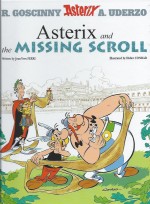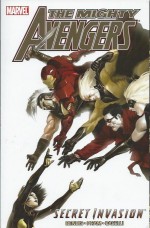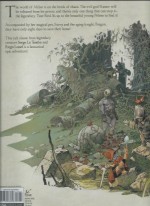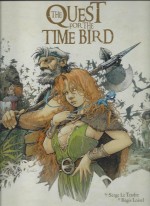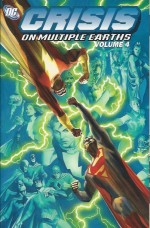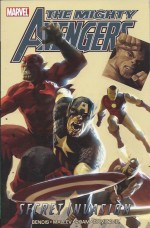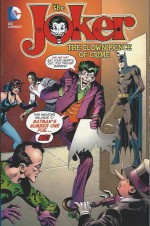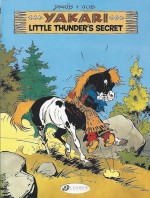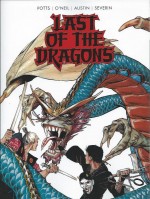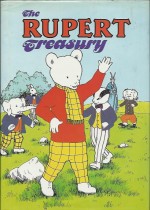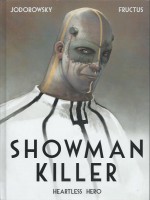
By Alejandro Jodorowsky & Nicolas Fructus (Titan Comics)
ISBN 978-1-78276-139-6
Born in Tocopilla, Chile in 1929, Alejandro Jodorowsky Prullansky is a filmmaker, playwright, actor, author, world traveller, philosopher, spiritual guru and comics writer.
The amazing modern polymath is most widely known for such films as Fando y Lis, El Topo, The Holy Mountain, Sante Sangre, The Rainbow Thief, The Dance of Reality and others, and a vast and influential comics output, including Anibal 5 (created whilst living in Mexico), Le Lama blanc, Aliot, The Meta-Barons, Borgia, Madwoman of the Sacred Heart and so many more, created with some of South America and Europe’s greatest artists.
His decade-long collaboration with Moebius on the Tarot-inspired adventure The Incal (1981-1989) completely redefined and reinvented what comics could aspire to and achieve.
Most widely regarded for his violently surreal avant-garde films, loaded with highly-charged, inspired imagery – blending mysticism and what he terms “religious provocation†– and his spiritually-informed fantasy and science fiction comics tales, Jodorowsky is also fascinated by humanity’s inner realms and has devised his own doctrine of therapeutic healing: Psychomagic, Psychogenealogy and Initiatic massage.
He still remains fully engaged and active in all these creative areas to this day.
He has never stopped creating and most of his lifelong themes and obsessions are seamlessly wedded together in this first volume of a visceral and challenging new sci fi slaughter series which first surfaced in France in 2010 as Showman Killer: Un héros sans coeur.
This slim but sublime translated hardback tome sparkles with the macabre painted mastery of illustrator/animator Nicolas Fructus (Thorinth, Kadath, Arthur and the Minimoys) and opens with a ‘Prologue’ wherein creepy mercenary technologist Doctor Courcolain and his truly disturbing assistant Paleo-Dog Orlanda visit the prison planet Halkatrass in search of fresh sperm samples…
They don’t come fresher than Joe the Gut-Eater‘s; his vital juices callously and corruptly obtained whilst he’s being actively tortured to death. Before long the mad scientist is back in his secret asteroid lab, inseminating long-missing celebrity Lady Anonima. The regal brood surrogate has been in a vegetative state for months and isn’t even aware that the next nine will be her last…
Doctor Courcolain has had enough of serving the puissant, parsimonious Omnimonarch. The prospective and self-made “parent†has a grand scheme to create the universe’s greatest ultra-mercenary and thereafter squeeze vast sums out of the bloodthirsty tyrant when his relentless, totally emotionless killer “son†carries off the lion’s share of regal commissions…
Reared in robotic isolation, the baby is subject to psycho-surgery and biological cyber-augmentation as Courcolain carefully nurtures his perfect killer and, when it comes of age, despatches him to learn/steal all the secrets of the Aldeberan ninja Akka-Kun, a first mission which leaves his sinister scion with the power to shapeshift…
Dubbing his flamboyant creation Showman Killer, the vile physician debuts his creature at the Omnimonarch’s grand gladiatorial games on Planet Gold, where the greatest warriors in the universe convene to fight and die for the sovereign’s pleasure.
The mystery newcomer makes an unimaginable splash and after winning a vast reward for Courcolain affords his creator one last surprise. The so-brilliant doctor has not fully considered what might happen in the mind of perfect assassin reared without hope or affection and programmed to think all life worthless and money the most important thing in creation…
When the dust and bloody mist settles the mature and independent Showman Killer than places himself at the Omnimonarch’s service…
The story proper begins years later as the paragon of murderers awakes from another horrible dream. The royal assassin has grown bored – even of the vast wealth his gifts have earned him – and when an urgent call comes to save the Omnimonarch’s newborn heir and wife from marauding Nihilos he diligently sets off, but cockily allows himself to be distracted by a higher bid from the King of Ornisaurios.
Judging he can save the bird-lizards from invasion and still tackle the Nihilos in time, Showman Killer indulges himself in a welter of gory slaughter, blithely unaware that he has made a grave miscalculation…
At the Noumara Palace Hospital on Planet Arcane the ravaging perpetrators have been exposed as the spearhead of a well-organised insurrection rather than a ragtag band of raiding primitives.
A traitor high within the court has made a ruthless power-play, but the valiant sacrifice of the queen has foiled his Plan A. Now, with the heir missing Showman Killer at last arrives, and experiences the full grief and fury of the Omnimonarch with calm detachment. Despite his failure the assassin is still necessary to the ruler whose soul screams out for vengeance.
The hidden plotter is also content: the real threat to his usurpation is the heir and now the most infallible hunter in the universe will find the child for him…
After a long quest and an ocean of spilled blood, the gulled seeker locates the missing baby and the strange woman who safeguards him. He has seen her many times – in his dreams – and when she leaves the baby in his care and vanishes, the Killer sets out for home with the strangest sensations disturbing his placid attitude. Could it be emotion or perhaps some unguessed connection to the royal infant…?
To Be Continued…
Stark, baroque and chillingly brutal, this is beguiling mystery and rousing space opera at their most uncompromising: blending the familiar locales and trappings of galactic empires with the dark, foredoomed mood and mystique of classical samurai dramas and classic Film Noir.
A visual feast for all lovers of fantastic fiction and ferocious yet tragic antiheroes…
Showman Killer volumes 1, 2, 3, Jodorowsky-Fructus © Éditions Delacourt 2010-2012 Showman Killer volume 1 is available in selected shops now and available to pre-order for a December 29th 2015 internet release.

